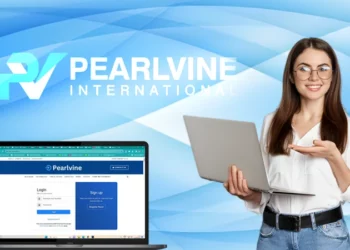Models of Fintech Software Outsourcing: Selecting the Right One for Your Project
Don’t miss out on the opportunity to tap into global top-tier talents, elevating your operational efficiency and flexibility. In this piece, we’ll delve into various software outsourcing fintech categories and examine how organizations can harness them to delegate their IT services successfully.
Tailoring the approach to meet the unique needs of each project is crucial, as there is no universal solution that fits every scenario. Fintech software outsourcing scenarios are generally categorized into three groups, considering factors such as the collaborative relationship, geographical proximity, and associated expenditures.
Based on the collaboration scale
Augmenting the personnel
This fundamental scenario involves recruiting professionals, such as designers, developers, or testers, from an external firm to blend with your in-house team. They collaborate closely, operating as an extension of your talent, and adhere to the company’s established flows. This type furnishes the adaptability to reinforce your specialists with niche prowess and knowledge critical for project skyrocketing.
Opting for this approach to thrive in the throat-cutting fintech software market offers significant advantages, particularly when addressing temporary requirements demanding particular skill sets tailored to a project. Opting for actual recruitment in such situations could be inefficient, leading to delays in and potential underutilization of your workforce once the IT initiative concludes. The ingrained adaptability of software outsourcing fintech, especially through this partnership type, enables smooth adaptation to the existing needs and workloads. This plasticity improves your ability to handle engineering more efficiently.
Assembling a dedicated group
The fundamental idea behind this approach is to form a dedicated group sourced from a tech partner. Rather than depending on your internal talent for particular responsibilities, you delegate those tasks to a complete unit supplied by the collaborator. Your company’s PM supervises and communicates with this group daily, retaining authority over priorities and assignments. This scenario provides the merit of tapping into specialized skills while enabling you to focus on other crucial facets.
The model proves efficient when contemplating prolonged interaction, such as ongoing maintenance or continuous engineering of fresh features.
Delegating the entire initiative
This scenario entails fintech software outsourcing the entire scope, covering its inception to completion, to an external firm. The contractor assumes accountability for implementation and adherence to deadlines. To estimate the workload, the tech firm needs a clear scope, specifications, and deadlines upfront. This pattern is particularly suited for companies with well-specified requests, distinct goals, and limited continual support needs. It stands out as a widely used pattern for engineering initiatives.
Hinging on expenditure
Pre-determined cost
Under this category, the spending on the initiative is predefined. The tech firm receives comprehensive project details, including the work extent, outputs, and timeframes, enabling it to pre-determine potential costs. Given the unpredictability of diverse scenarios, a margin is often added to account for unforeseen situations. However, this pattern isn’t widely employed in the fintech software market due to the multitude of nuances that can influence engineering.
Hourly billing
Resource-based billing associates the ultimate price with the confirmed duration and means expended. In essence, it entails multiplying the hourly rate by the hours dedicated to the work for each employee. With this approach, you remunerate the contractor solely for the actual effort invested.
Derived from the contractor’s location
Domestic option
This entails contracting a firm in close vicinity to your location to fulfill specific tasks or projects. This model facilitates seamless collaboration through in-person meetings, fostering effective communication without language or cultural barriers. Similar to nearshoring, the domestic option is advantageous when prioritizing face-to-face interactions is crucial for a company. However, it’s essential to note that potential costs associated with this model may be higher compared to the offshore alternative.
Global option
This is the practice of contracting fintech software development services to a company located in a distant geographic region, often across continents. This approach involves navigating diverse time zones, work cultures, and languages. In contrast to nearshore and onshore models, the global option provides cost advantages stemming from lower labor expenses. Effective communication and well-planned meetings within overlapping working hours can mitigate challenges arising from geographical and cultural disparities.
Aspects deciding the choice of fintech software outsourcing pattern
Adopting the perfect collaboration model demands a thorough evaluation of your firm’s distinctive elements. To pinpoint the best-matching pattern, adhere to these guidelines:
- Assess requirements: see to the specific needs of your project, taking into account factors such as its complexity, duration, and the expertise required. Subsequently, set your mind on whether you require a holistic solution from a contractor or targeted prowess through team reinforcement.
- Assess the stage: software outsourcing fintech is well-suited for early-stage initiatives or when a comprehensive solution is needed from initiation to completion. A dependable tech partner such as Andersen will oversee all aspects, encompassing planning, execution, and delivery. Conversely, team reinforcement is a preferable choice in advanced stages, characterized by a well-defined roadmap. This approach empowers you to supplement your unit with specialized pros smoothly incorporating and streamlining contributions toward success.
- Evaluate governance inclinations: judge the magnitude of oversight and hands-on involvement you expect in the engineering routine. If you prefer direct oversight and close interaction, team reinforcement is the better option. However, if you lean towards a hands-off approach and prefer another party to engage in the IT initiative, software outsourcing fintech is advisable.
- Evaluate capacities in place: scrutinize available competencies encompassing management proficiency, technical know-how, and workforce availability. Team enhancement can synergize with these strengths when possessing an accomplished team and sturdy leadership processes. In contrast, fintech software outsourcing may align better when requiring additional management resources and desiring a vendor to deliver an all-encompassing solution.
- Examine financial parameters: software outsourcing fintech grants utilization of the contractor’s infrastructure, mastery, and acumen, alleviating the costs tied to sourcing and overseeing own experts. This budgetary optimization releases funds for additional strategic business endeavors. Conversely, team augmentation (outstaffing) enables you to enlist experts not bound by the financial obligations linked to fully-fledged employment, such as bonuses, office space, and educational spending. It presents an economical alternative, delivering the required proficiencies without an additional financial burden.
- Assess niche proficiency: Ascertain if your product necessitates specialized industry knowledge. If the answer is yes, go for software outsourcing fintech. Controversially, team reinforcement permits you to attract skilled practitioners who possess the narrow industry expertise required.
- Don’t write off scalability advantages: to skyrocket in the fintech software market, you don’t necessarily expand in-house resources when handling large-scale initiatives. The tech partner can allocate the essential talent and capabilities to meet the given parameters effectively. In contrast, team enhancement provides flexibility in adapting your team size according to the situation. You have the flexibility to effortlessly modify your team size, availing yourself of thoughtful resource allotment and financial thrift. Whether you expect to expand the scope or downsize the group, both options grant versatility to accommodate your evolving business aspirations.
Takeaway
The landscape of software outsourcing fintech includes a spectrum of formats catering to diverse preferences. Opting for geographical proximity, offshore, or global types hinges on considerations such as communication preferences, budgetary factors, and the call for specialized industry knowledge. Each type presents distinct merits, allowing businesses to draw from talent reservoirs globally, attain economic balance, and access industry expertise.
Moreover, cost-based patterns, e.g. fixed price, provide versatility in budgeting and payment structures. While fixed price approaches bring along predictability, milestones and materials models align costs with actual asset utilization, fostering transparency.
Ultimately, the decision-formulating pathway involves a meticulous evaluation of internal resources, management preferences, expandability conditions, and domain mastery. By navigating these considerations thoughtfully, you’ll harness the perks of fintech software outsourcing to drive innovation, accelerate time spans, and achieve strategic objectives.
















